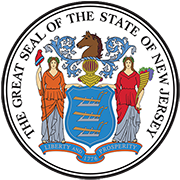COVID-19: Governor Signs Executive Order Allowing Beaches, Boardwalks, Lakes, and Lakeshores to Open with Social Distancing
Published on May 15, 2020
Order Includes State and County Parks and Forests
Gov. Phil Murphy has signed Executive Order No. 143, allowing beaches, boardwalks, lakes, and lakeshores to open with social distancing in place. Swimming in designated areas and picnicking also will be allowed at state parks and forests, as well as county and municipal parks. (PNG, 54KB)
(PNG, 54KB)
The order takes effect on Friday, May 22.
The Order requires that water fountains, picnic areas, playgrounds, pavilions, indoor recreational facilities, and other buildings and facilities, such as visitor centers, must remain closed. There is an exception allowing bathrooms, showering areas, and changing areas to stay open.
Restaurants and bars located on the beaches, boardwalks, lakes and lakeshores are still limited to delivery and take-out services only and that amusements parks and arcades, and other places of public amusement located on the beaches, boardwalks, lakes, and lakeshores remain closed.
Any outdoor seating, such as tables or benches, must be removed, taped off, or otherwise blocked.
The Executive Order also recommends, but does not order, that people wear a face covering when social distancing measures are difficult to maintain.
To limit physical interactions, the Executive Order requires municipalities, lake commissions, private club associations or entities, and other local government to implement reasonable restrictions, including:
- Imposing non-discriminatory capacity restrictions;
- Requiring that members of the public practice social distancing;
- Developing and implementing lifeguard training and beach operation plans that address COVID-19 considerations;
- Removing, taping-off or otherwise blocking all benches and tables;
- Prohibiting the tying together of boats to prevent group gatherings;
- Developing and implementing a continuous public outreach campaign, including signage, social media, town and county websites, mobile device applications, radio, and banner-plane advertising;
- Prohibiting special events such as festivals, concerts, fireworks, and movies;
- Prohibiting all organized or contact activities or sports;
- Limit occupancy in public restrooms; and
- Implementing sanitization protocols.
The restrictions also apply to public piers, docks, wharfs, boat ramps, and boat landings throughout the state.
Municipalities, counties, and responsible commissions, associations, units of county or local government, and private beach clubs may impose additional restrictions and retain the legal authority to close beaches or boardwalks if they choose to do so.
Due to the diverse nature of the shore and lake communities, the Executive Order does not mandate specific social distancing measures. Examples of social distancing measures left to a municipality's discretion include but are not limited to the following:
- Demarcating six feet of spacing in any areas where the public may form a line;
- Limiting the number of lifeguards to each stand or tower, maintaining social distance between lifeguards, and adding stands or towers as necessary;
- Installing physical barriers between the public and employees in ticket or beach badge sale booths; and
- Limiting occupancy of ticket or beach badge sales booth to one person at a time.
The Order explicitly prohibits capacity limitations that discriminate against non-residents, low-income people, and other protected classes.
A copy of Executive Order No. 143 can be found here.